Coronary artery disease, also called coronary heart disease, is one of the most common types of heart disease and a leading cause of death worldwide. It develops when the coronary arteries narrow due to plaque buildup, restricting how blood flows to the heart muscle. This restriction can lead to chest pain, heart attack, and heart failure if left untreated.
Coronary artery disease occurs when fatty substances, cholesterol, calcium, and other materials accumulate on the artery walls, a process known as atherosclerosis. Over time, this buildup can block blood flow, depriving the heart muscle of oxygen-rich blood, which is essential for proper function.
This article provides an in-depth look at coronary artery disease symptoms, risk factors, diagnosis, and treatment options, as well as how to prevent coronary artery disease and maintain heart health.
What Is Coronary Artery Disease?
Coronary artery disease, sometimes referred to as ischemic heart disease, is a condition where the coronary arteries continue to narrow, reducing blood supply to the heart muscle. It can be classified into:
- Obstructive coronary artery disease, where significant blockages develop and stop blood flow to the heart.
- Nonobstructive coronary artery disease, where plaque buildup does not fully block blood flow but still restricts blood supply to the heart.
When a plaque ruptures, it can trigger the formation of a blood clot, which may completely block blood flow, leading to a heart attack. If the heart muscle does not receive enough blood for a prolonged period, it can result in serious complications, including abnormal heart rhythms and heart failure.
Risk Factors for Coronary Artery Disease

Several factors contribute to the development of coronary artery disease, some of which are modifiable through lifestyle changes, while others are beyond a person’s control.
Modifiable Risk Factors
- High blood pressure, which increases stress on blood vessels and promotes artery disease.
- High cholesterol, particularly high levels of LDL (bad cholesterol), which leads to plaque buildup.
- Smoking, which damages artery walls and accelerates atherosclerosis.
- Diabetes, which increases the risk of metabolic syndrome and vascular damage.
- Obesity, which is linked to high blood pressure, high cholesterol, and diabetes.
- Physical inactivity, which contributes to poor circulation and narrowed arteries.
- Unhealthy diet, particularly one high in processed foods, trans fats, and added sugars.
- Excessive alcohol consumption, which raises blood pressure and promotes weight gain.
- Mental health issues such as chronic stress and depression, which can negatively affect heart health.
Non-Modifiable Risk Factors
- Family history of cardiovascular disease increases the likelihood of developing coronary artery disease.
- Age, as the risk rises significantly for men over 45 and women over 55.
- Gender, as men are more likely to develop coronary artery disease at an earlier age than women.
- Ethnicity, as certain groups, including African Americans and South Asians, have a higher risk of heart disease.
- Autoimmune diseases, such as rheumatoid arthritis, which can increase inflammation and arterial damage.
Coronary Artery Disease Symptoms

Many individuals with coronary artery disease do not experience noticeable symptoms in its early stages. However, as the disease progresses, symptoms may include:
Common Symptoms
- Chest discomfort or pain (angina), often described as pressure, tightness, or burning in the chest.
- Shortness of breath due to the heart’s reduced ability to pump blood efficiently.
- Fatigue, especially after minimal exertion, due to insufficient blood supply to the body.
- Heart palpitations caused by abnormal heart rhythms.
Common Heart Attack Symptoms
If a blocked artery completely stops blood flow, a heart attack may occur. Common heart attack symptoms include:
- Intense chest pain or discomfort that lasts for several minutes.
- Pain spreading to the arms, back, jaw, or neck.
- Shortness of breath and difficulty breathing.
- Cold sweats, nausea, or dizziness.
If any heart attack symptoms occur, immediate medical attention is necessary.
Diagnosing Coronary Artery Disease
A healthcare provider may recommend several tests to diagnose coronary artery disease and assess blood flow to the heart.
Common Diagnostic Tests
- A physical exam and medical history evaluation to identify risk factors such as high cholesterol, high blood pressure, and family history of cardiovascular disease.
- Electrocardiogram (ECG or EKG) to detect abnormal heart activity.
- Stress test to evaluate how the heart functions under exertion.
- Echocardiogram to visualize heart structure and pumping efficiency.
- Coronary artery calcium scan to measure calcium deposits in the arteries.
- Cardiac catheterization to check for blocked arteries and assess blood flow.
- CT angiography or MRI for detailed imaging of the coronary arteries.
Complications of Coronary Artery Disease
Coronary artery disease can lead to several serious complications, each with significant health implications:
- Heart Attack: When blood flow to the heart is completely blocked, it can cause a heart attack, damaging the heart muscle. This occurs when a plaque ruptures and forms a blood clot, obstructing the coronary artery.
- Heart Failure: Over time, coronary artery disease can weaken the heart muscle, leading to heart failure. This condition means the heart cannot pump enough blood to meet the body’s needs, causing fatigue, shortness of breath, and fluid buildup.
- Cardiac Arrhythmias: The reduced blood flow and damage to the heart muscle can lead to abnormal heart rhythms, known as arrhythmias. These can range from minor irregularities to life-threatening conditions requiring immediate medical attention.
- Stroke: A stroke can occur if a blood clot forms in the coronary arteries and travels to the brain, blocking blood flow. This can result in brain damage and long-term disability.
- Peripheral Artery Disease: Coronary artery disease can also affect blood vessels in other parts of the body, such as the legs and arms, leading to peripheral artery disease. This condition causes pain and mobility issues due to reduced blood flow.
- Kidney Disease: The kidneys rely on a healthy blood supply to function properly. Coronary artery disease can increase the risk of kidney disease by impairing blood flow to these vital organs.
- Cognitive Impairment: There is a link between coronary artery disease and an increased risk of cognitive impairment and dementia. Reduced blood flow to the brain can contribute to these conditions over time.
Impact on Blood Flow
Coronary artery disease significantly impacts blood flow to the heart, leading to various health issues:
- Reduced Blood Flow: Plaque buildup in the coronary arteries narrows these vessels, reducing blood flow to the heart. This can cause chest pain (angina), shortness of breath, and other coronary artery disease symptoms.
- Increased Blood Pressure: The narrowing of the arteries forces the heart to work harder to pump blood, leading to high blood pressure. This increased pressure can further damage the blood vessels and exacerbate coronary artery disease.
- Blood Clots: Plaque buildup can lead to the formation of blood clots in the coronary arteries. These clots can block blood flow entirely, resulting in a heart attack. Blood clots are a critical concern in managing coronary artery disease.
- Plaque Buildup: Over time, the continuous accumulation of plaque in the coronary arteries causes them to narrow progressively. This chronic reduction in blood flow can lead to persistent chest pain and increase the risk of heart attacks.
Coronary Artery Disease Treatment
Coronary artery disease treatments involve a comprehensive approach focused on enhancing blood flow to the heart. Treating coronary artery disease aims to restore blood flow, reduce symptoms, and prevent complications.
Lifestyle Changes
Making lifestyle changes is the most effective way to prevent coronary artery disease and slow its progression. These include:
- Maintaining a healthy weight to reduce strain on the heart.
- Eating a balanced diet rich in vegetables, whole grains, and lean proteins while avoiding processed foods.
- Engaging in regular physical activity, such as at least 30 minutes of moderate exercise most days of the week.
- Quitting smoking, as tobacco use significantly worsens coronary artery disease.
- Managing stress through relaxation techniques and improving mental health.
Medications
Healthcare professionals often prescribe medications for treating coronary artery disease, including:
- Statins to lower high cholesterol and slow plaque buildup.
- Beta-blockers to reduce blood pressure and lower heart rate.
- Aspirin to prevent blood clot formation and improve circulation.
- ACE inhibitors to lower blood pressure and reduce strain on the heart.
Medical Procedures
If lifestyle changes and medications are not enough to manage the disease, medical procedures may be necessary:
- Angioplasty and stenting, in which a small balloon is used to open the narrowed arteries and a stent is placed to keep them open.
- Coronary artery bypass grafting (CABG), where a healthy blood vessel from another part of the body is used to bypass a blocked artery.
Cardiac Rehabilitation
A cardiac rehab program is essential for patients recovering from a heart attack or heart surgery. It includes:
- Supervised exercise training to improve heart function.
- Education on managing risk factors and maintaining a heart-healthy lifestyle.
- Mental health support to help cope with stress and anxiety related to heart disease.
Living with Coronary Artery Disease

Living with coronary artery disease involves making significant lifestyle changes and managing the condition to prevent complications:
- Medications: Adhering to prescribed medications is crucial for managing coronary artery disease. Medications such as statins, beta-blockers, and aspirin help control symptoms, lower cholesterol, reduce blood pressure, and prevent blood clots.
- Lifestyle Changes: Implementing healthy lifestyle changes is essential. Quitting smoking, engaging in regular physical activity, and following a heart-healthy diet rich in vegetables, whole grains, and lean proteins can significantly improve heart health.
- Stress Management: Managing stress is vital for heart health. Techniques such as meditation, yoga, and deep breathing exercises can help reduce stress levels and improve overall well-being.
- Regular Check-Ups: Regular check-ups with a healthcare provider are necessary to monitor the condition and adjust treatment plans as needed. These visits help track progress and catch any potential issues early.
- Cardiac Rehabilitation: Participating in a cardiac rehabilitation program can greatly benefit those with coronary artery disease. These programs offer supervised exercise training, education on heart-healthy living, and support for managing stress and anxiety.
By understanding the complications of coronary artery disease, its impact on blood flow, and how to live with the condition, individuals can take proactive steps to manage their health and reduce the risk of serious complications.
Preventing Coronary Artery Disease
To prevent coronary artery disease, it is crucial to maintain heart health by:
- Managing high blood pressure and high cholesterol levels.
- Exercising regularly and maintaining a healthy weight.
- Following a diet that minimizes processed foods and saturated fats.
- Controlling conditions such as diabetes and rheumatoid arthritis.
- Reducing stress and prioritizing mental well-being.
Conclusion
Coronary artery disease is a serious yet preventable condition. By recognizing risk factors, making necessary lifestyle changes, and seeking early medical intervention, individuals can significantly reduce their risk of complications such as heart attack, heart failure, and abnormal heart rhythms. If you experience any signs of coronary artery disease, consult a healthcare provider for proper evaluation and treatment.
Prioritize Your Heart Health with New York Choice Medical
At New York Choice Medical, we provide expert, prevention-focused care to help you manage coronary artery disease, high blood pressure, and other heart health concerns. Whether you need a comprehensive health screening, personalized lifestyle guidance, or specialist referrals, our dedicated team is here to support you. Take charge of your heart health today—schedule your appointment now.
Frequently Asked Questions (FAQs) About Coronary Artery Disease (CAD)
2. What are the common symptoms of coronary artery disease?
Many people with coronary artery disease do not experience symptoms in the early stages. However, as the disease progresses, common symptoms include:
- Chest pain or discomfort (angina), often triggered by physical activity or stress.
- Shortness of breath, especially during exertion.
- Fatigue, even after light activities.
- Irregular or abnormal heart rhythms.
- In severe cases, a heart attack may occur, which includes symptoms like intense chest pain, pain radiating to the arms or jaw, cold sweats, and nausea.
3. Who is at risk for developing coronary artery disease?
Several factors increase the risk of developing coronary artery disease, including:
- High blood pressure and high cholesterol.
- Smoking and excessive alcohol consumption.
- Diabetes and metabolic syndrome.
- Obesity and physical inactivity.
- Unhealthy diet high in saturated fats and processed foods.
- Family history of cardiovascular disease.
- Chronic stress and autoimmune diseases like rheumatoid arthritis.
Older age and certain ethnic backgrounds, such as African American or South Asian, also increase the risk.
4. How is coronary artery disease diagnosed?
A healthcare provider may use several tests to diagnose coronary artery disease, such as:
- Physical exam and review of medical history.
- Electrocardiogram (ECG/EKG) to check for abnormal heart rhythms.
- Stress test to measure heart function during exertion.
- Coronary artery calcium scan to detect calcium deposits.
- Cardiac catheterization to examine blocked arteries and blood flow.
- CT angiography or MRI for detailed imaging of the coronary arteries.
5. What are the treatment options for coronary artery disease?
Treating coronary artery disease focuses on restoring blood flow, relieving symptoms, and preventing complications. Treatment options include:
- Lifestyle changes – Maintaining a healthy weight, eating a heart-healthy diet, quitting smoking, and managing stress.
- Medications – Statins to lower cholesterol, beta-blockers to reduce blood pressure, aspirin to prevent blood clot formation, and ACE inhibitors to protect the heart.
- Medical procedures – Angioplasty with stenting to open blocked arteries or coronary artery bypass grafting (CABG) to bypass blocked arteries.
- Cardiac rehabilitation – A supervised program that includes exercise, education, and mental health support for patients recovering from a heart attack or heart surgery.

